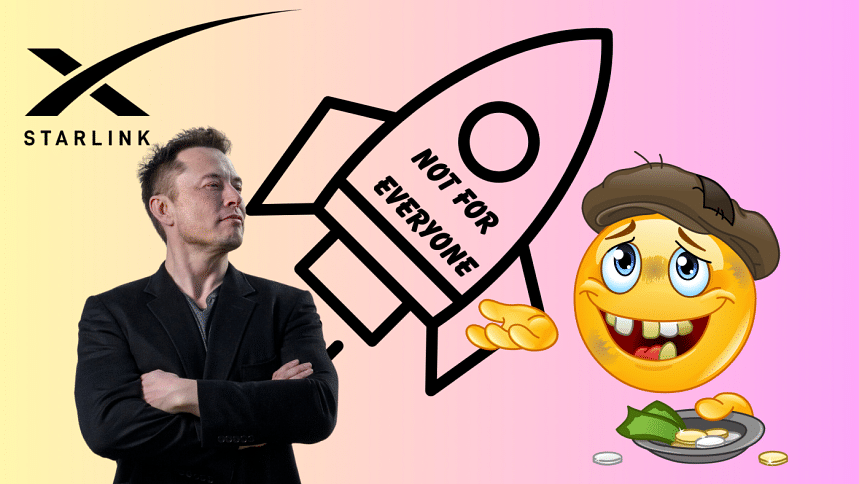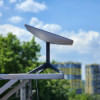Starlink isn’t magic — and it’s not for everyone

Elon Musk's internet-from-space venture has finally made landfall in Bangladesh, complete with pre-order forms, two pricing tiers, and that shiny promise of high-speed internet, anywhere. And like most shiny things, it's got people talking. However, what is Starlink, how does it operate, and — above all — is the dish worth nearly Tk 50,000?
So, how does Starlink work?
At its core, Starlink is a satellite-based internet system. But not the typical variety that we see. A few enormous satellites that are floating far out in geostationary orbit, or around 35,000 kilometres above Earth, are the foundation of traditional satellite internet. Your data must travel a considerable distance, which is why it frequently feels as though you are browsing with a delay.
On the other hand, Starlink makes use of a dense constellation of low-Earth orbit satellites that orbit at a mere 550 kilometres above the earth. The result is lower latency and noticeably snappier speeds. You set up the dish — called "Dishy"— on a rooftop or open space, plug it in, and it locks onto the sky. From there, your data hops to a satellite, down to a ground station, and out to the internet.
The not-so-glossy bits
First off, weather is not your friend here. Thick fog, a cloudy sky, or even heavy rain might slow things down or result in short-term dropouts. It's not dramatic, but noticeable — especially if you're in the middle of a video call or uploading a large file.
Obstructions are another pain point. The dish needs a totally clear view of the sky — trees, poles, even tall buildings can throw the connection off. In rural areas, where electric lines and bamboo towers sprout up unpredictably, it's something to watch out for.
Then there's power. If your area is prone to voltage drops or random load shedding — and let's be honest, many are — Starlink will go down with it. No power, no connection. Unless you've got a solar backup or a UPS running the system, you're grounded.
And here's something not many talks about: the dish can overheat. In peak summer, under relentless sun, the hardware has been known to shut down until it cools off. Not ideal if you're working from the Rajshahi countryside in June.
Let's not forget the occasional congestion. Because users share satellite bandwidth, speed can dip during peak hours if too many people in your area are connected. It's not frequent, but it's there.
Lastly — and this bit often gets missed — Starlink isn't immune to control. Despite the whole "internet from space" vibe, the service operates under Bangladeshi telecom licensing. That means it can be shut down or restricted during National Emergencies, just like any local ISP. So, if you imagined Starlink staying on while the rest go dark... well, not quite.
So, is it worth the price?
It depends entirely on where you live. The one-time setup cost is Tk 47,000. Then there's Tk 4,200/month for the Lite plan or Tk 6,000 for the full-speed tier. In rural or completely underserved areas — think chars, haors, and hill tracts — it's a solid investment. You're buying access, not just speed.
But in most cities or suburban areas? It's more of a status symbol than a necessity. Local fibre ISPs already offer faster, cheaper, and more reliable connections with fewer weather hiccups. For the average city user, Starlink is probably overkill.
Starlink is impressive. It's built for edge cases — literally. For travellers, researchers, or families cut off from conventional networks, it's a game-changer. But it's not flawless. It stutters in storms, needs power to stay alive, and doesn't always guarantee privacy from state intervention.
So, before you invest in a dish from the stars, ask yourself; is it filling a real gap, or just scratching a digital itch? Because in this case, the sky isn't always the limit. Sometimes, it's just cloudy.

 For all latest news, follow The Daily Star's Google News channel.
For all latest news, follow The Daily Star's Google News channel. 








Comments